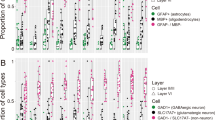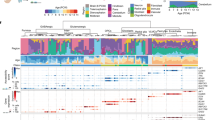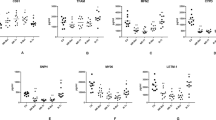Abstract
In recent studies that addressed the transcriptional control of steroid synthesis, a transcriptional regulating protein of 132 kDa (TReP-132) was cloned and demonstrated to regulate expression of the human P450 side chain cleavage (P450scc) gene. In the present study, we describe the cloning and characterization of the mouse orthologue of the human factor, mouse transcriptional regulating protein (mTReP-132). mTReP-132 encodes a 1216-residue protein that is 85.5% homologous to the human protein. Both factors contain characteristic motifs, namely glutamine-, proline- and acidic-rich regions. The primary structure also exhibits two zinc fingers of the C2H2 subtype, suggesting that this protein has the ability to act as a DNA binding transcription factor. mTReP-132 may also be a co-regulator of nuclear receptors because of two nuclear box motifs in this protein. Northern blot analysis demonstrated the expression of two transcripts of 4.4 and 7.5 kb in several tissues, but expression was clearly highest in the brain, thymus and testis of mice. In the brain, the hybridization signal was quite localized and strong in the basal ganglia, hippocampus, piriform cortex, cerebral cortex, ventromedial nucleus of the hypothalamus, and the dorsal and superior central nuclei of the raphe. Although classical steroidogenesis pathways have yet to be firmly established in the brain, expression of both mTReP-132 and P450scc provides anatomical evidence that mTReP-132 may regulate this key steroidogenic enzyme within specific regions involved in behavioral and psychiatric disorders. Moreover, the presence of both mTReP-132 and steroidogenic factor 1 (SF-1) transcripts in the ventromedial nucleus of the hypothalamus suggests a role for mTReP-132 in brain development and function. The molecular cloning and the highly specific expression of mTReP-132 across the brain further consolidate the hypothesis that this tissue is able to synthesize de novo steroids in a region-specific manner.
This is a preview of subscription content, access via your institution
Access options
Subscribe to this journal
Receive 12 print issues and online access
$259.00 per year
only $21.58 per issue
Buy this article
- Purchase on SpringerLink
- Instant access to full article PDF
Prices may be subject to local taxes which are calculated during checkout






Similar content being viewed by others
References
Miller WL . Molecular biology of steroid hormone synthesis. Endocr Rev 1988; 9: 295–318.
Mesiano S et al. Localization and regulation of corticotropin receptor expression in the midgestation human fetal adrenal cortex: implications for in utero homeostasis. J Clin Endocrinol Metab 1996; 81: 340–345.
Simpson ER, Lund J, Ahlgren R, Waterman MR . Regulation by cyclic AMP of the genes encoding steroidogenic enzymes: when the light finally shines. Mol Cell Endocrinol 1990; 70: C25–C28.
Waterman MR, Bischof LJ . Mechanisms of ACTH(cAMP)-dependent transcription of adrenal steroid hydroxylases. Endocr Res 1996; 22: 615–620.
Mellon SH, Deschepper CF . Neurosteroid biosynthesis: genes for adrenal steroidogenic enzymes are expressed in the brain. Brain Res 1993; 629: 283–292.
Conley AJ, Rainey WE, Mason JI . Ontogeny of steroidogenic enzyme expression in the porcine conceptus. J Mol Endocrinol 1994; 12: 155–165.
Compagnone NA, Bulfone A, Rubenstein JL, Mellon SH . Expression of the steroidogenic enzyme P450scc in the central and peripheral nervous systems during rodent embryogenesis. Endocrinology 1995; 136: 2689–2696.
Stromstedt M, Waterman MR . Messenger RNAs encoding steroidogenic enzymes are expressed in rodent brain. Brain Res Mol Brain Res 1995; 34: 75–88.
Gizard F, Lavallee B, DeWitte F, Hum DW . A novel zinc finger protein TReP-132 interacts with CBP/p300 to regulate human P450scc gene expression. J Biol Chem 2001; 276: 33 881–33 892.
Compagnone NA, Mellon SH . Neurosteroids: biosynthesis and function of these novel neuromodulators. Front Neuroendocrinol 2000; 21: 1–56.
Mensah-Nyagan AG et al. Neurosteroids: expression of steroidogenic enzymes and regulation of steroid biosynthesis in the central nervous system. Pharmacol Rev 1999; 51: 63–81.
Chomczynski P, Sacchi N . Single-step method of RNA isolation by acid guanidinium thiocyanate–phenol–chloroform extraction. Anal Biochem 1987; 162: 156–159.
Laflamme N, Rivest S . Toll-like receptor 4: the missing link of the cerebral innate immune response triggered by circulating gram-negative bacterial cell wall components. FASEB J 2001; 15: 155–163.
Heery DM, Kalkhoven E, Hoare S, Parker MG . A signature motif in transcriptional co-activators mediates binding to nuclear receptors. Nature 1997; 387: 733–736.
Kozak M . An analysis of vertebrate mRNA sequences: intimations of translational control. J Cell Biol 1991; 115: 887–903.
Mitchell PJ, Tjian R . Transcriptional regulation in mammalian cells by sequence-specific DNA binding proteins. Science 1989; 245: 371–378.
Tanaka M, Lai JS, Herr W . Promoter-selective activation domains in Oct-1 and Oct-2 direct differential activation of an snRNA and mRNA promoter. Cell 1992; 68: 755–767.
Mermod N, O'Neill EA, Kelly TJ, Tjian R . The proline-rich transcriptional activator of CTF/NF-I is distinct from the replication and DNA binding domain. Cell 1989; 58: 741–753.
Tanaka M, Clouston WM, Herr W . The Oct-2 glutamine-rich and proline-rich activation domains can synergize with each other or duplicates of themselves to activate transcription. Mol Cell Biol 1994; 14: 6046–6055.
Unger T, Nau MM, Segal S, Minna JD . p53: a transdominant regulator of transcription whose function is ablated by mutations occurring in human cancer. EMBO J 1992; 11: 1383–1390.
Hammer GD, Ingraham HA . Steroidogenic factor-1: its role in endocrine organ development and differentiation. Front Neuroendocrinol 1999; 20: 199–223.
Ikeda Y, Luo X, Abbud R, Nilson JH, Parker KL . The nuclear receptor steroidogenic factor 1 is essential for the formation of the ventromedial hypothalamic nucleus. Mol Endocrinol 1995; 9: 478–486.
Shinoda K et al. Developmental defects of the ventromedial hypothalamic nucleus and pituitary gonadotroph in the Ftz-F1 disrupted mice. Dev Dyn 1995; 204: 22–29.
Yukawa K, Tanaka T, Tsuji S, Akira S . Regulation of transcription factor C/ATF by the cAMP signal activation in hippocampal neurons, and molecular interaction of C/ATF with signal integrator CBP/p300. Brain Res Mol Brain Res 1999; 69: 124–134.
Baulieu EE . Neurosteroids: of the nervous system, by the nervous system, for the nervous system. Recent Prog Horm Res 1997; 52: 1–32.
Rupprecht R, Holsboer F . Neuroactive steroids: mechanisms of action and neuropsychopharmacological perspectives. Trends Neurosci 1999; 22: 410–416.
Griffin LD, Mellon SH . Selective serotonin reuptake inhibitors directly alter activity of neurosteroidogenic enzymes. Proc Natl Acad Sci USA 1999; 96: 13 512–13 517.
Gizard F, Lavallee B, DeWitte F, Teissier E, Staels B, Hum DW . The transcriptional regulating protein of 132 kDa (TReP-132) enhances P450scc gene transcription through interaction with steroidogenic factor-1 in human adrenal cells. J Biol Chem 2002; 277: 39 144–39 155.
Acknowledgements
This research was supported by the Canadian Institutes of Health Research (CIHR; the former Medical Research Council of Canada (MRCC)) to DWH and SR. SR is an MRCC Scientist and holds a Canadian Research Chair in Neuroimmunology. While at the CHUL Research center, DWH was a Scholar of the Fonds de la Recherche en Santé du Québec (FRSQ). We thank Nataly Laflamme for excellent advice and technical assistance, and we are grateful to Dr Olivier Barbier for insightful comments on the manuscript.
Author information
Authors and Affiliations
Corresponding authors
Rights and permissions
About this article
Cite this article
Duguay, Y., Lapointe, A., Lavallée, B. et al. Cloning of murine TReP-132, a novel transcription factor expressed in brain regions involved in behavioral and psychiatric disorders. Mol Psychiatry 8, 39–49 (2003). https://doi.org/10.1038/sj.mp.4001201
Published:
Issue date:
DOI: https://doi.org/10.1038/sj.mp.4001201



